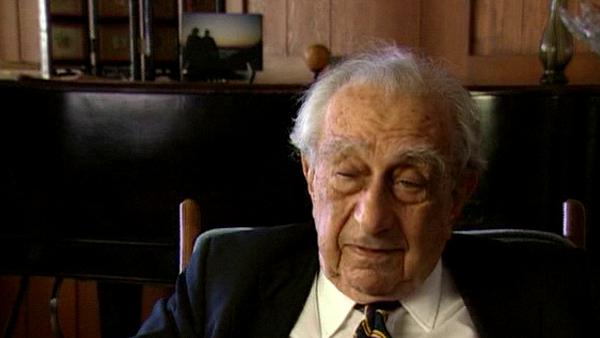NEXT STORY

Permission to become a physicist
RELATED STORIES

NEXT STORY

Permission to become a physicist
RELATED STORIES


|
Views | Duration | |
|---|---|---|---|
| 11. Getting together with Szilárd, von Neumann and Wigner | 2263 | 02:49 | |
| 12. University and the Eötvös prizes | 683 | 03:48 | |
| 13. First success as a scientist | 647 | 02:30 | |
| 14. Going to university in Germany | 716 | 02:03 | |
| 15. Working on Set Theory from first principles | 608 | 02:52 | |
| 16. Wave-particle duality sparked a fascination with physics | 615 | 04:24 | |
| 17. Permission to become a physicist | 1 | 532 | 03:05 |
| 18. The inspiration of Herman Mark | 497 | 03:40 | |
| 19. A lack of enthusiasm for Sommerfeld | 1031 | 02:42 | |
| 20. Jumping off the moving train | 628 | 00:47 |


The late Hungarian-American physicist Edward Teller helped to develop the atomic bomb and provided the theoretical framework for the hydrogen bomb. During his long and sometimes controversial career he was a staunch advocate of nuclear power and also of a strong defence policy, calling for the development of advanced thermonuclear weapons.
Title: Wave-particle duality sparked a fascination with physics
Listeners: John H. Nuckolls
John H. Nuckolls was Director of the Lawrence Livermore National Laboratory from 1988 to 1994. He joined the Laboratory in 1955, 3 years after its establishment, with a masters degree in physics from Columbia. He rose to become the Laboratory's Associate Director for Physics before his appointment as Director in 1988.
Nuckolls, a laser fusion and nuclear weapons physicist, helped pioneer the use of computers to understand and simulate physics phenomena at extremes of temperature, density and short time scales. He is internationally recognised for his work in the development and control of nuclear explosions and as a pioneer in the development of laser fusion.
Duration: 4 minutes, 25 seconds
Date story recorded: June 1996
Date story went live: 24 January 2008